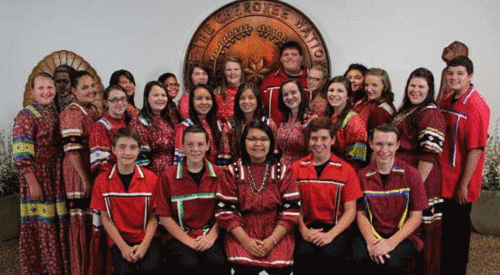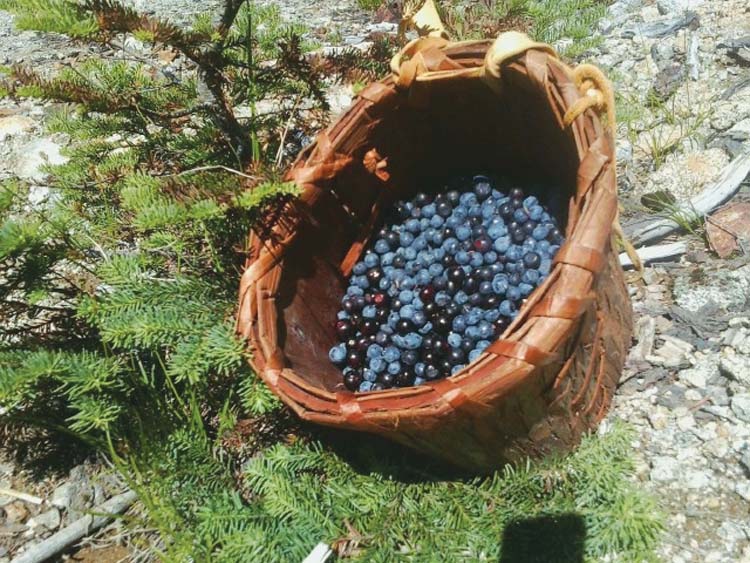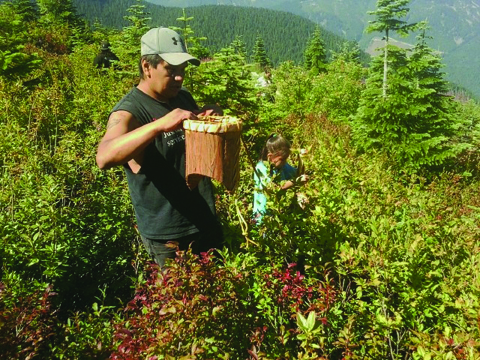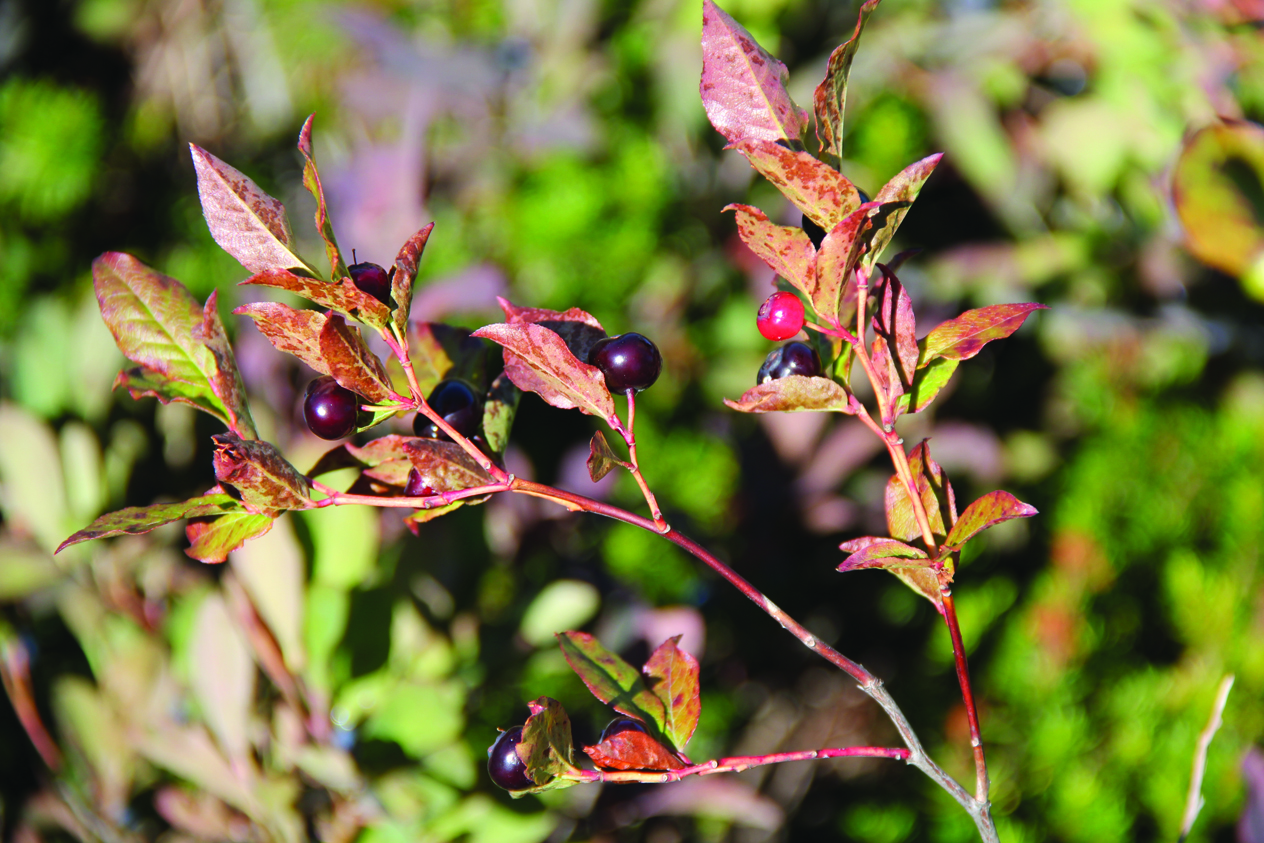Category: Arts & Entertainment
Cherokee Nation Youth Choir in Thanksgiving Parade

Source: Grand Lake News
TAHLEQUAH, Okla. —The Cherokee National Youth Choir will trade their traditional Thanksgiving turkey and dressing meal to travel to New York City and sing in the Macy’s Thanksgiving Day Parade.
It’s the second time the Cherokee National Youth Choir has been invited to the parade. The choir participated in 2007.
“We are thrilled to be invited back to the Macy’s Thanksgiving Day Parade,” said Cherokee National Youth Choir Director Mary Kay Henderson. “It is very humbling, and our students take the opportunity very seriously. They know they are representing the Cherokee Nation on the parade route.”
Henderson said the 2 ½-mile parade, with more than 4 million people in attendance and viewers watching nationally, is mind boggling and something the 28 choir members will never forget.
The group is practicing weekly and held numerous fundraisers. The tribe will underwrite the majority of the trip.
The Cherokee National Youth Choir was founded in 2000 to keep youth interested in the culture and involved with speaking the Cherokee language. The choir has produced 11 albums, with the most recent being “Cherokee America” in 2012. The song choice for the Macy’s Day Parade won’t be revealed until on the parade route.
The public can hear the Cherokee National Youth Choir during several concerts at the Cherokee National Holiday. The choir will perform during the art show at the Tahlequah Armory Municipal Center at 6:30 p.m. Friday, Aug. 30. They also perform at Principal Chief Bill John Baker’s State of the Nation address about 11:30 a.m. Saturday, Aug. 31, at the Court House Square, and 2 p.m. at the Tahlequah Armory Municipal Center. Admission is free.
For more information on the Cherokee National Youth Choir, contact Mary Kay Henderson at 918-772-4172 or marykay-henderson@cherokee.org.
After Offensive Fiasco, Paul Frank Collaborates With Native Designers
Kate Crowley, Jezebel.com
Imagine this: After producing an event offensive to Native Americans, Paul Frank is now working with Native American artists and designers — going from cultural appropriation to cultural appreciation.
This time of year about 150,000 people descend on Santa Fe, New Mexico for Indian Market and it’s a pretty big deal as leaders and artists from the United States and Canada get together for an extreme exchange of creative thoughts. This past Friday evening before the official start of Indian Market, about 200 fashion-forward folks gathered at the Museum of Contemporary Native Arts to celebrate the release of the “Paul Frank Presents” collection, featuring work by four Native designers.

Unlike previous get togethers, this one didn’t include tomahawks, “war paint,” or cocktails with tacky neo-native names. Instead it celebrated a high profile “win” for all who challenge cultural appropriation.
The event launched the collection and included a panel discussion and receptions with some of the movers and shakers involved in the Paul Frank/Beyond Buckskin/Native Appropriations saga proved that sometimes social change can be an outcome of fashion design, blogging, and community action. Whoa. The event centered on a dynamite panel with the collection’s designers (Candace Halcro, Plains Cree/Metis, Louie Gong, Nooksack, Autumn Dawn Gomez, Comanche/Taos and Dustin Quinn Martin, Navajo), powerful female writers and bloggers Adrienne Keene, Cherokee, and Jessica Metcalfe, Turtle Mountain Chippewa, and VP of Design for Paul Frank, Tracy Bunkoczy.

Part academic, part celebration, the atmosphere at the beginning of the event was serious: a quick 10-minute rehash of previous events, including the party Paul Frank held where Native appropriation was flaunted, in front a mostly Native crowd was likely the source of Bunkoczy’s cautious nervousness. “It must be hard to sit here and listen to this over and over again,” Keene playfully said of the rehash to the group in attendance from Paul Frank. However Keene also noted that the ladies from Paul Frank really spent extra time working with Metcalf, Keene and the artists to make the collaboration line a reality.

“This happened because of people in the Native American community and our allies who want us to be represented properly in popular culture,” said Dr. Metcalfe.
“I’m not used to there being any sort of response back to me….I was just blown away, ” says Keene of Paul Frank’s large-scale action, which included facilitating a licensing webinar for those in the industry as well as extensive action on items that had already been licensed.
After a recap of the previous transgressions, the artists spoke to the audience about their work for the collaboration inspiring laughter and head-nodding from the audience. Gomez, wearing a crown from her Paul Frank line, stressed a duty to her community while Gong said his work for the line was directly inspired by the situation that led to the collaboration including “sustainable relationships.” Canadian designer Candace Halcro, with a hairstyle that likely was the inspiration for Miley’s new ‘do, said she loves looking “crazy and cool and trendy.” She’s known as the “sunglasses girl,” and experimented with how to incorporate Julius, the Paul Frank mascot before deciding to stay true to her brand’s most well known look. Dustin Quinn Martin, the first designer to speak ended his portion with this thought: “I hope especially the Native people in the crowd are proud of what we came up with, and feel like there’s a little bit of us in every single one of these designs and that we didn’t sell out to the man.”

Indeed, you might be wondering what the deal with profits is here, since it was earlier noted that the designers “consulted” for free. At the event it was revealed that the designers themselves will receive the profits from the new line, but also that much of the work concerning the manufacturing and creation of the items was left to the artists. This wasn’t out of the norm for the female designers, since none of their work can easily be mass-produced. Still, the items showcasing the graphics that the male designers created essentially needed to be outsourced for mass production. “Normal” Paul Frank collaborations involve a split of the profits between the company and the other designer. This time around Paul Frank will not profit from the sales and all of the profits from the collection will go to each of the designers. The items are sold through the Beyond Buckskin Boutique and the Paul Frank items at the MoCNA seemed to be selling well and attracting attention this weekend.

Autumn Dawn Gomez; Dustin Martin; Candace Halcro.
The crowd was a who’s who of creatives in Indian Country and Santa Fe. Just like any other fashion party, guests were anxious to mingle, meet the designers and try on items from the line. This time though, everyone in attendance was appreciative of the work and aware of what can happen when a community challenges appropriation.

The artists and panelists pose with the Paul Frank crew.
Kate Crowley is a blogger in the Southwest who writes for New Times’ Chow Bella and Jackalope Ranch blogs. Follow her on Twitter: @KateCrowley.
Tribal Journeys: Canoe Trips to Our Native Past, and Future
Gyasi Ross, Indian Country Today Media Network
Television, Edward Curtis photographs and romance novel covers have collectively painted the accepted images of Native people.
As a result of these images, a lot of peoples’ image of a Native person is that of a person who rides horses, comes from one of the Dakotas or Montana, and dances with wolves at pow-wows. Heck, even many Native people have the Dances With Wolves image embedded in our own heads (thus why the Hollywood Indian-complex consists of guys walking around LA and Santa Fe with their hair flying about, John Redcorn-style, because presumably that’s what casting agents/hippie chicks are looking for. NOTE: Skins on the Plains do not wear their hair like that!! It’s too damn windy!), and so the default “Native” image is that of a pow-wow dancer, Plains Indian-style.

I grew up at pow-wows; they are beautiful, important and fun (oh the stories I could tell!).
Yet, if you don’t have that look or participate in those pow-wows, folks question your credibility as a Native person. And pow-wow dancing/Plains-style phenotype is definitely a very valid expression of pan-Native culture (I submit that almost every Skin who was raised in a Native family has been to a pow-wow at some point!), yet it is not the only expression of pan-Native culture.
Random White Guy At Pow-wow to His Wife: “Gee honey, that doesn’t look like any Indian I’ve ever seen.”
Random White Guy’s Wife: *thinking* Yes, you’re right. Because if he looked like any of the ones that I’ve seen on my romance novels, he would be big and brown and muscular and on a big ol’ horse…and he’d pull me away and hold me captive! “No, he doesn’t honey.”
One such pan-Native event that has been growing in popularity and is redefining what it means to be, look, and celebrate being Native is something called “Tribal Journeys” on the Pacific Northwest Coast. Like pow-wows, Tribal Journeys blends many Northwest coastal, New Zealand, Canadian and Alaska Native tribes, tribal practices, songs, dances and foods into a pretty amazing stew and makes something beautiful out of it. The Journey began in 1989 as equal parts political protest, but also an attempt to recapture parts of the Coastal Native way of life that have been overlooked and/or forgotten for a long time. Also, like pow-wows, Tribal Journeys had very modest beginnings, and has steadily gotten bigger and more structured every single year; the host Tribe incurs a lot of expense putting this huge event together that attracts over 15,000 people a day to the host community. Whereas the original “Paddle to Seattle” had 18 canoes, now there are over 100 canoes that make the trek.
It’s grown. And is growing.
Like most truly unique events, words don’t do Tribal Journeys justice. Yet, here’s the basic idea behind it: Tribal Journeys retraces the paths, practices, and protocols of those that went before us, seeing through the eyes of our ancestors. As Chief Si’ahl (commonly referred to as “Seattle”) said, “Our religion is the traditions of our ancestors.” This happens by individual families canoeing from one Native homeland to the next, asking permission to enter those homelands. Historically, it was very important to ask permission and to state whether you were friend or foe—if not, there could be very serious consequences. There are many canoe families on Tribal Journeys—this is historically correct since one tribe could have many different canoe families, since many Native communities were not simply one community. Instead, most “tribes” had many villages and smaller sub-groups that usually spoke a common language.
There are many stops during this Journey. The travelling time of the journey is anywhere from a week to two-and-a-half weeks. Every single tribal homeland you pass, you ask permission and come ashore. Once ashore, that particular Native community takes care of you, feeds you and gives you someplace to sleep (camping style!!). That night, there’s an exchange of songs, dances and stories in a time called “protocol.” Of course, this isn’t the traditional name for this time or practice, yet this English name is appropriate because it implies a time of order, to pay attention and give thanks. While the Tribal Journeys itself was created in 1989, the protocol portion of the event is a variation of the ancient coastal tradition of potlatching.
There is a goal, a final destination. Ultimately, all the canoe families will gather at a place (the host Tribe) where a whole bunch of Natives gather together and party (in a safe, respectful and drug and alcohol free way) for a week or so…exchange songs, dances, speeches, and generally have a good time. During the immediately past Tribal Journey, the host Tribe—the Quinault—took the Journey back to its potlatch roots and let the protocol go around the clock. Also, like the ancient potlatches, the Quinault gifted individuals with some pretty spectacular gifts—tons of stuff, but they also gave away ten hand-carved canoes, which took about 9 months to carve.
Pretty powerful stuff.
Speaking for myself, honestly after two weeks of camping, I’m pretty darn happy to get back to the conveniences of home and watch some River Monsters or Ancient Aliens. Our ancestors lived a life with a lot less distractions. Still, it’s a beautiful event…and not only because of the songs and the dances and the opportunity to see through the eyes of our ancestors. While those reasons are certainly important and are surely enough to attend Tribal Journeys all by themselves, there is more to it than that. That is, I think it’s also important for folks—non-Natives AND Natives alike—to understand that not all Natives look alike, or have the same stories or practices.
That’s only in Hollywood.
Please check out this link for information on the next Tribal Journey, the Paddle to Bella Bella (Canada): thecnsc.org/CNSC_Site/Bella_Bella.html











Read more at http://indiancountrytodaymedianetwork.com/2013/08/26/canoes-and-recapturing-culture-tribal-journeys-northwest-coast-151028
Swәdx’ali, Huckleberry Hill

Photo/Ross Fenton
Co-stewardship areas yield bountiful harvests
By Andrew Gobin, Tulalip News, with photo contributions from Ross Fenton
Tulalip − The Tulalip Forestry Department took their summer youth workers huckleberry picking in Swәdx’ali on Harlan Ridge for the Hibulb Cultural Center on Wednesday, the 21st.
The berry patch is one of many co-stewardship areas throughout the Mt. Baker-Snoqualmie National Forest where tribes are collaborating with the Washington Forest Service to preserve and maintain natural flora. Along with gathering berries for the museum, the Tribes’ Forestry Department wants to make the tribal membership aware of Swәdx’ali, and sites like it, where our people can go and harvest traditional plants and foods.
Staining their hands purple and red, the day was also intended as a fun and meaningful way to bring the youths’ time with the department to an end.
“Every year, we look for ways to take the youth out of the office, away from the reservation, and show them what we do, while having a little fun,” said Jason Gobin, Tulalip Forestry Manager. “And the museum will get a nice surprise because they don’t know they’re getting berries today,” he added.

Photo/Andrew Gobin
Swәdx’ali, meaning the place of the mountain huckleberry, is on Harlan Ridge and is covered with berry bushes; the common huckleberry bush with the small red berries, the mountain blueberry bush, and the big leaf huckleberry bush that has the larger black berries. Swәdx’ali is so named because of cultural and biological significance of the area, as the big leaf huckleberry naturally grows in the mountains, above 3,000 feet.
This area is one example of how the Tulalip Tribes is working to reclaim traditional areas. The co-stewardship with the state stems directly from the Point Elliot Treaty, which secured claims to usual and accustomed places, and the privilege of “gathering roots and berries in all open and unclaimed land.”
Reiterating the need to bring awareness to the people, Gobin explained, “These places of co-stewardship are open to all of Tulalip, but there aren’t many who know how to access them, or that we even have these resources available to us.”
For those who would like to access these sites, contact Tulalip Natural Resources at 360-716-4640 or Tulalip Forestry at 360-716-4371.

Photo/Andrew Gobin
To The Barricades! Echo-Hawk Says Justice for Natives at Tipping Point
 Kevin Taylor, ICTMN
Kevin Taylor, ICTMN
With his distinctive round eyeglasses and long, gray braids, Walter Echo-Hawk looks rather more owlish than revolutionary.
But the longtime Pawnee speaker, author and lawyer who toils on the frontlines of federal Indian Law makes a strong argument that it is time to drive a stake into the legacy of colonialism in his new book, In the Light of Justice: The Rise of Human Rights in Native America and the UN Declaration on the Rights of Indigenous Peoples (Fulcrum, 2013).
That stake could be the United Nations Declaration of the Rights of Indigenous Peoples, which Echo-Hawk sets out to examine and explain. Adopted by the United States in December 2010, it has yet to be integrated into law or policy. This provocative book, educational and inspiring for indigenous and “settler” alike, can show the way.
RELATED: Bringing UNDRIP to the People Is Next Step for Indigenous Rights: Chief
Echo-Hawk says he was motivated to write this volume as something of a hopeful counterpoint to his previous book, In the Courts of the Conqueror, which examined the worst cases in federal Indian law.
RELATED: In The Courts of the Conqueror: A Short Review
What jumps out at anyone studying mainstream attitudes toward this country’s Indigenous Peoples is the fact that what much of white America thinks of as a bygone era of treaty making, frontier warfare and taming the West is, to Indian people, current events. Life under the heel of historical oppression looks far different than the view of the boot wearer.
This difference in perspective goes deep to the bubbling heart of the notion of Melting Pot America, dividing white from brown, immigrant from Native. The confusion over Indian and Non-Indian relations becomes clear in this well-focused book when Echo-Hawk identifies a root cause that is often forgotten, or is not understood in the first place: colonial policies and their attendant settler mind-set.
It’s symptomatic of a severe disconnect, to say the least, that a nation founded upon principles of liberty and justice and freedom for all—one willing to shed blood in defense of these principles against oppressors, no less—could treat its original inhabitants with such astonishing injustice.
Echo-Hawk demonstrates how this dynamic plays out in America’s courtrooms, especially the U.S. Supreme Court. Chief Justice John Marshall is one of the nation’s most revered jurists, yet it was Marshall who introduced the doctrine of conquest into federal Indian law in the 1823 decision Johnson v. M’Intosh, ruling that colonists owned any Indian lands “acquired and maintained by force.” Tribal people, he wrote, were “fierce savages, whose occupation was war,” and thus did not warrant international legal protections for countries under invasion.
RELATED: Walter Echo-Hawk on Supreme Court Failures
Doctrines of conquest and discovery used by European nations during 500 years of colonization, Echo-Hawk writes, allow governments to usurp indigenous land, property and rights without consent even today. Though Marshall later evolved his thinking, Echo-Hawk notes, the seeds planted in 1823 still exist. The Roberts Court, he writes, is one of the most hostile to Indian rights—the Baby Veronica ruling being the most recent example—and is actively eroding gains made in recent decades.
For every M’Intosh, Echo-Hawk says, there were other, more reasoned, decisions such as Worchester v. Georgia in 1832, in which the high court rejected conquest as an absurd legal fiction. But even as that ruling was being published, the federal and state governments were in the grip of the Indian Removal Movement, evicting Southern tribes from their homelands.
These “clothes of the conqueror,” as Echo-Hawk calls them, do not befit a democratic nation such as ours. He offers keen insight into the parallels between the long, painful African-American struggle for equality and the fight of tribal people to maintain their rights. The Civil Rights movement for many years used a counterintuitive tactic, known as the Margold Plan, to file a multitude of lawsuits urging the federal government to uphold its legal standard of “separate but equal.” Case after case after case was pursued to this end, forcing school districts and local governments and the courts to confront racial inequalities and cynical government policy.
Over several decades this approach focused at least a trickle of attention onto racial injustice, scored court victories and gained allies. Then, Brown v. Board of Education signaled a shift in tactics to a direct assault in order to show, Echo-Hawk writes, that “separate but equal” was unconstitutional.
Echo-Hawk believes that Indian Country is poised at a similar tipping point.
Skirmish after skirmish in often hostile federal courts has carved some sturdy pillars for treaty rights and sovereignty. But, Echo-Hawk argues, the cultural survival of Native America depends on a march to justice, and so does America’s evolution from a settler state to a more fully just society.
Echo-Hawk is a lawyer, and his topic of international human rights sometimes pulls him into dense thickets of language. But far from being a slog, the words in this book are illuminated by his passion for the topic, and his deep knowledge of the fight for fair treatment in federal courts. His words often burn with clarity, as does his message: Although the U.N. Declaration is a powerful tool for asserting human rights for Indigenous Peoples, it will not implement itself.
“Indigenous rights are never freely given—they must be demanded, wrested away, then vigilantly protected,” Echo-Hawk writes. “That is the essence of freedom.”
Read more at http://indiancountrytodaymedianetwork.com//2013/08/25/walter-echo-hawk-shines-light-justice-human-rights-native-america-150925
Touch-A-Truck coming Sept. 14
The City of Marysville invites you to Touch-A-Truck on Saturday, Sept. 14, an event that puts your kids in the driver’s seat of Marysville’s biggest heavy-duty rigs. Honk the horns, set off sirens, kick the tires on a variety of big rigs – dump trucks, backhoe, vactor truck, police vehicles, street sweeper, Marysville Fire District fire engines, garbage trucks, an aid car and more. Come join the fun!
Marysville Noon Rotary Club will offer special activities for kids, and Marysville Kiwanis will have tasty treats for sale.
For more information please call (360) 363-8400. Please bring a donation for the Marysville Food Bank. No pets, please.
Can’t Bead the Real Thing: Fakes, Frauds and What You Can Do About It

source: DHGate.com
Anyone can buy seed beads like these — but not just anyone can be a Native craftsperson.
AJ Earl, ICTMN
Whether you’re Assiniboine, Nʉmʉnʉ, Skokomish or otherwise, you’ve probably got some beadwork somewhere. It might be a gift for your family, for friends or maybe a co-worker who’s done an exceptional thing for you. It’s important and it’s a heartfelt thing, but where did it come from? Is it handmade or is it fake? If it’s fake, could you tell?
Although we sometimes take for granted our talented craftspeople, it’s important to know that there are threats to their very livelihoods. Much of the problem stems from fakes. The market for various Native arts has been flooded for years with fakes and knock-offs, and bead-work is no different. For the last few decades the craftspeople who make a living off of bead-work have had to contend with competition from non-natives and from overseas. Spotting these fakes and knowing why it’s important to call them out is only part of the solution. Knowing what to do and then acting is key.
Even if you buy from a pow wow, it’s not always guaranteed that the bead-work you get will be authentic. No matter how observant you are, if you roll it over in your hands, look it up and down, it’s sometimes hard to tell what exactly you’re buying. Many fakes simply look convincing. AAA Native Arts, a website devoted to selling native arts, says that bead-work is often imported from China and Taiwan. Still other problems exist with non-Natives selling imitations or art “inspired by” Native crafts, often times unlabeled as such. This can be a problem for the broader Native community.
A quick search online for “imitation native american bead-work” brings up 14,300,000 results on Google.com, and similar numbers on other search engines. Searching for “imitation native american headdress” gets 10.3 million results. A look for “native american costume” nets almost 4.4 million results. Almost none of the pieces look quite as good as something you’d get from a cousin or from one of our skilled elders, it’s missing something vital.
One of the most important aspects of Native bead-work, one thing that fakes lack, is its deep cultural value. Many of us can identify a friend or family member who beads. One such person is Cynthia Parrott from Washington State. A junior at the Tacoma campus of the University of Washington, Cynthia has been working with beads for years. She started working with beads in 5th grade after watching her mother for years, saying “ it was either this or weaving.” It’s a family matter as much as it is a personal one.
Parrott also brings up a second important aspect of bead-working: sustaining their families and themselves. “In college we all need extra money, so my bead-work is the way I make extra money,” says Parrott, “it’s my own little business”. For this reason she’s keenly aware of the fakes and fraudulent Native crafts that flood the market from time to time. “My craft is mass-produced in Guam and is brought here,” Parrott adds, “I think it is so disrespectful and there is no way we can compete with these prices.”
In order to help stem this tide the United States Congress passed the Indian Arts and Crafts Act of 1990. This act sets out to create standards for labeling and representation. It sets clear limits on who can call their art Native, how they can label it when they sell it, and who exactly is able to benefit from this protection. The reason was wholly cultural: bead-working and many other crafts can be traced back centuries, well before Columbus landed here. Beads, for example, originally started as bits of stone, shell, clay, bird bones or the leg bones of small animals. Pre-Columbian archeological sites often contain beads of all sorts. Protecting this art is vital to ensure the continuation of the multitude of Native cultures.
Of course, this act did not create a series of agents trolling pow wows and craft fairs in Brooklyn for fake Native crafts, so what do you do if you suspect what you’ve bought or what a dealer is selling is a fake? You get in contact with somebody! In order for it to be successful, it requires an attentive population calling out items they suspect of being fake or artists selling Native art that they think may not be Native. To that end, the Indian Arts and Crafts Act of 1990 needs you to be effective! The law allowed for the creation of the Indian Arts and Crafts Board. This board is tasked with oversight of enforcement and reporting and is the place you bring complaints and reports of violations. It also has brief reports, examples of violations and info brochures for you to download at its website: iacb.doi.gov.
To protect our culture we need to be aware of what we’re looking for and what to do if we find it. The problem is clear and the solution is there. Now let’s do something about it!
Read more at http://indiancountrytodaymedianetwork.com/2013/08/23/cant-bead-real-thing-fakes-frauds-and-what-you-can-do-about-it-150988
Foreigner kicks out their hits Sunday at Tulalip

Mick Jones (left), Lou Gramm and the band Foreigner perform Sunday at the Tulalip Amphitheatre, followed by the Doobie Brothers and America on Sept. 7.
Ashley Stewart, The Herald
Foreigner will perform Sunday at the Tulalip Amphitheatre.
With 10 multi-platinum albums and nine top 10 hits dating back to the bands formation in the late ’70s, the band has become a fixture in classic rock.
They’re best known for hits like “I Want To Know What Love Is,” “Juke Box Hero” and “Waiting For A Girl Like You,” and will play selections from throughout their more than 30-year career.
The show starts at 7 p.m.; doors open at 5 p.m. You must be age 21 or older to attend.
Tickets start at $30, available at www.ticketmaster.com.
Next up are the Doobie Brothers and America on Sept. 7.
Tickets start at $35 for the upcoming show.
The amphitheater is at 10400 Quil Ceda Blvd. Tulalip.
For more information, visit www.tulalipamphitheatre.com.
Teams Travel to Cherokee Nation for Inaugural Stickball Tournament
Source: Native News Network
TAHLEQUAH, OKLAHOMA – Five stickball teams from Oklahoma and Mississippi will showcase their skills this Saturday, August 24, in the inaugural Cherokee National Holiday men’s stickball tournament at Sequoyah Schools’ Thompson Field.
Citizens play a social game of stickball during the 60th Cherokee National Holiday.
“If we don’t show everyone our traditional games, we will lose them,”
said stickball tournament coordinator Marcus Thompson, who will also play with his team, the Nighthawks.
“Men’s stickball is the roughest sport there is, but we want people to know you can still play the game and that it is fun.”
Stickball was traditionally used to settle disputes or prepare for war. Today, teams of 20-30 people take the field and play an hour-long game consisting of four 15 minute quarters or two 30 minute halves.
The object is to hit the pole in the center of the field by throwing the ball with stickball sticks or running the ball and touching the pole while possessing the ball. The team with the most points at the end of the game wins.
The double-elimination tournament using traditional Choctaw rules will start at 8:00 am. Admission is free.
Social stickball games will also be played at Sequoyah Schools’ football field at 8:00 pm and 9:00 pm, August 31.
Other sporting events at the 61st Cherokee National Holiday August 30-September 1 include the following:
Traditional Events
- Finals in the marble tournament will be held at 9 am, August 31, at the Cherokee Heritage Center. For more information, call Phil King at 918.837.1940.
- Cornstalk shoot competition will be held at 7:30 am west of the W.W. Keeler Complex on August 31-September 1, with registration at 7:30 am and competition at 8:00 am. For more information, call Charolette Jackson at 918.316.2932.
- Horseshoe pitch competition will be held west of the W.W. Keeler Complex at 9:00 am on August 31. For more information, call Jody Slover at 918.822.2428.
Non-traditional Events
- 5K Holiday Veterans Run will begin at the Cherokee Nation War Memorial on August 31. Registration begins at 6:00 am and race starts at 7:30 am. Cost is $20 on the day of the race. For more information, email Hillary Mead at Hillary-fry@cherokee.org.
- Co-ed volleyball tournament will be played west of the Cherokee Nation W.W. Keeler Complex starting at 9:00 am, August 31. Entry deadline is August 23. For more information, call Denise Honawa at 918.816.1995.
- 3 on 3 basketball tournament on August 30-31 at the Cherokee Nation Male Seminary Recreation Center. For more information, call Kim Arneecher at 479.427.9494.
- Cherokee National Holiday softball tournaments will be played at the Cherokee Nation Softball Complex near Sequoyah Schools. The fast-pitch tournaments will be played August 23-25, and slow-pitch tournaments August 30-September 1. For more information, call Sherwin Johnson at 918.696.5760 or Crystal Bogle at 918.316.1940.
- Children’s fishing derby will held August 31 from 7:30 am to noon at the pond east of the W.W. Keeler Complex. Angler Jason Christie will be on site to take photos and sign autographs, and 300 fishing poles will be given out to participants. For more information, email Ryan Callison at ryan-callison@cherokee.org.
- Three golf tournaments will be hosted at Cherokee Springs Golf Course August 29-31. The Thursday tournament will be a senior two man scramble and the Friday tournament a two man scramble open to all ages. The Saturday tournament will be a four man scramble with tee times at 8:00 am and 1:00 pm. Entry fee for all tournaments is $40 for golf course members at Cherokee Springs or Cherokee Trails and $50 for non-members, and all entries must be pre-paid. For more information, call Tyler Crouch at 918.456.5100.











